Menu
4G LTE and Wi-Fi connected Linux SBC with GNSS global positioning
The Omega2 LTE single board computer adds 4G LTE cellular connectivity and GNSS positioning to WiFi-enabled Linux device. Enabling developers to deploy connected IoT applications written in NodeJS or Python in any place with cellular service with minimal effort.
- High speed LTE Cat 4 connectivity
- Global GNSS positioning
- U.FL connectors to allow flexibility in choosing cellular and positioning antennas
- Hardware design and OS are open source
- Dual mode 2.4 GHz 802.11 b/g/n Wi-Fi - simultaneously host a WiFi access point and connect to existing WiFi networks
- CPU, memory, and storage are built-in and runs OpenWRT Linux out of the box
- Features USB, ethernet, MicroSD, 2x UARTs, I2C, SPI, GPIOs interfaces
- Can be powered by LiPo batteries, and charge batteries when connected to power
- Easy command line access through MicroUSB Port
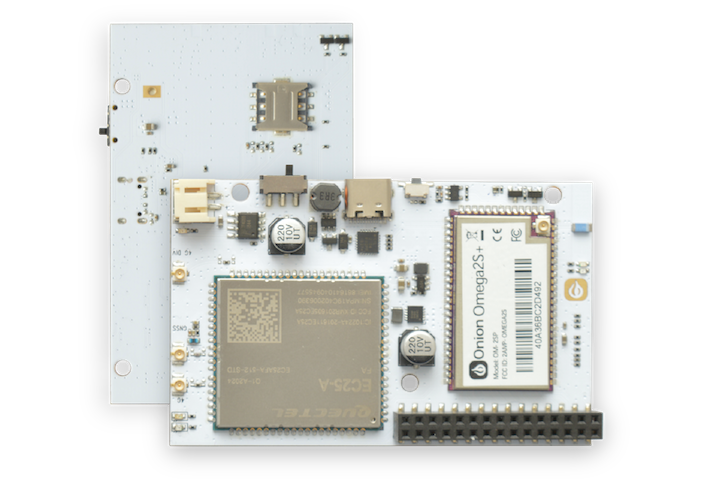
Overview
The Omega2 LTE is a WiFi-enabled, Linux-based single board computer with high-speed 4G LTE cellular data connectivity and GNSS global positioning. The Linux network stack takes care of the complexity of LTE data behind the scenes and makes the switch between Wi-Fi and cellular data seamless to user applications.
Smaller than a credit card, the Omega2 LTE is an all-inclusive, standalone computing device for developing cellular IoT applications. It just needs a Nano-SIM card with a data plan, LTE antennas, and power over USB-C or LiPo battery. When your cellular IoT application is ready to move beyond the concept stage, leverage the open source design when building your own custom hardware.
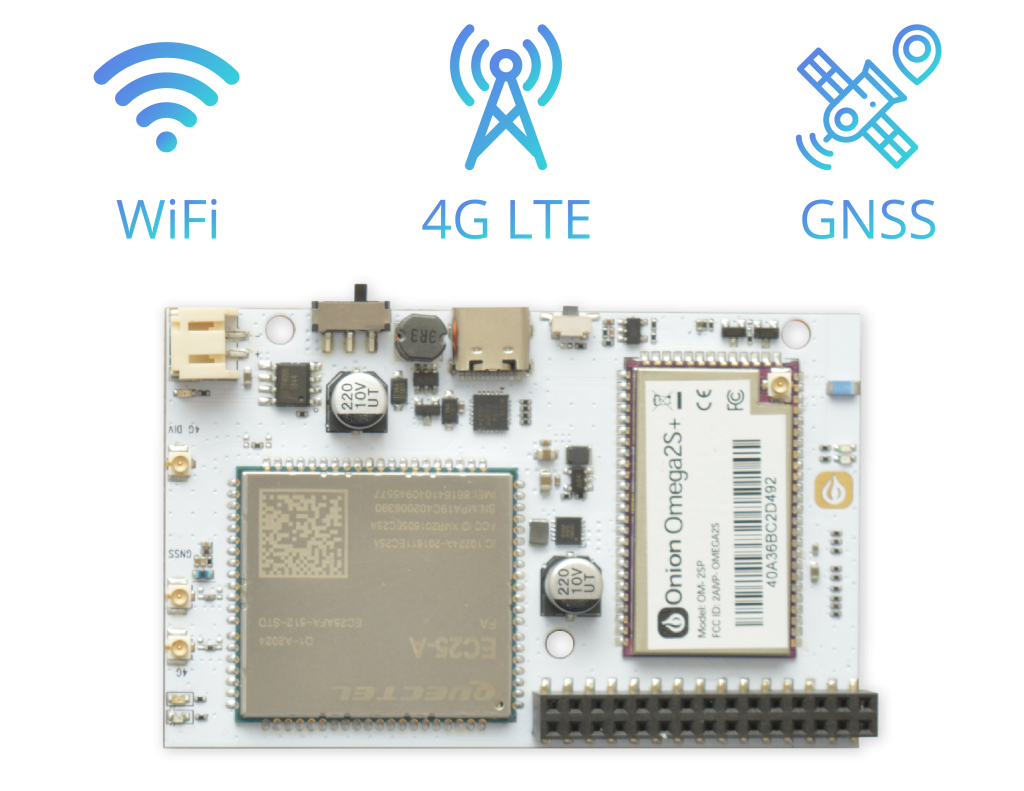

Cellular
The Omega2 LTE features a Quectel LTE Cat 4 modem that delivers 150 Mbps downlink and 50 Mbps uplink data rates. It supports Nano-SIM cards by way of a slot on the underside of the device. The complexity of the LTE modem is abstracted by Linux OS, and the modem can be easily configured using a command-line utility. Two variants are available:- A North America model with compatibility for North America cellular networks
- A Global model that supports cellular network bands used around the world
- Real-Time Asset Tracking – Use the LTE data connection to transmit GNSS location data
- Remote Sensing – Use your favorite programming language to collect data from I²C, one-wire, SPI, digital, or analog sensors, and report it to an online service or API endpoint
- Wireless Network Sharing – Share the cellular data connection with devices connected to the Omega2 LTE’s WiFi access point
- Wired Network Sharing – Share the cellular data connection with other devices using ethernet
Global Positioning
In addition to the cellular connectivity, the Omega2 LTE features a high-sensitivity, multi-constellation GNSS receiver, capable of retrieving positioning and accurate time data worldwide. The Omega2 LTE supports all of the common positioning systems:- GPS
- GLONASS
- BeiDou
- Galileo
- QZSS
Hardware
The Omega2 LTE is based on the Omega2S+ module, featuring a MIPS CPU, 128 MB memory, 32 MB storage, and a WiFi radio & antenna. The OS is pre-loaded on the built-in storage, so the Omega2 LTE is ready to go out of the box. The microSD card slot on the bottom of the device can be to extend the amount of available storage. Every useful for storing any assets created by the device — log files, images, etc. During early development, easy access to the command line is essential for quick iterations. The built-in USB-to-serial chip provides reliable, always-on access to the Omega’s command line through the USB-C port. Power can be supplied either through the USB-C port or by a LiPo battery connected to the JST-PH connector. Connected batteries will be safely charged when the device is powered over USB-C. The Omega2 LTE features extensive I/O – Ethernet, I2C, UART, I2S, SPI, PWM, and GPIOs – making it easy to interface with other devices and components. The I/O header on the Omega2 LTE is compatible with the existing ecosystem of plug-and-play Omega2 Expansions, allowing users to easily add functionality to their device. All of this in a 80 x 50 mm board.Software
The Omega2 LTE runs an Onion-customized version of OpenWRT Linux, based on the modern 4.14 Linux kernel. The OS is open-source and available on GitHub, allowing users to customize it to meet their individual needs. By virtue of the Linux OS, developers are not limited in their choice of programming language. Supported programming languages include:- Python3
- NodeJS 8.10
- GoLang
- Rust
- Ruby
- C and C++
- Shell
- PHP
- Perl
Variants
Omega2 LTE Variants
| OM-O2LTE-NA | Omega2 LTE North America Model |
| OM-O2LTE-G | Omega2 LTE Global Model |

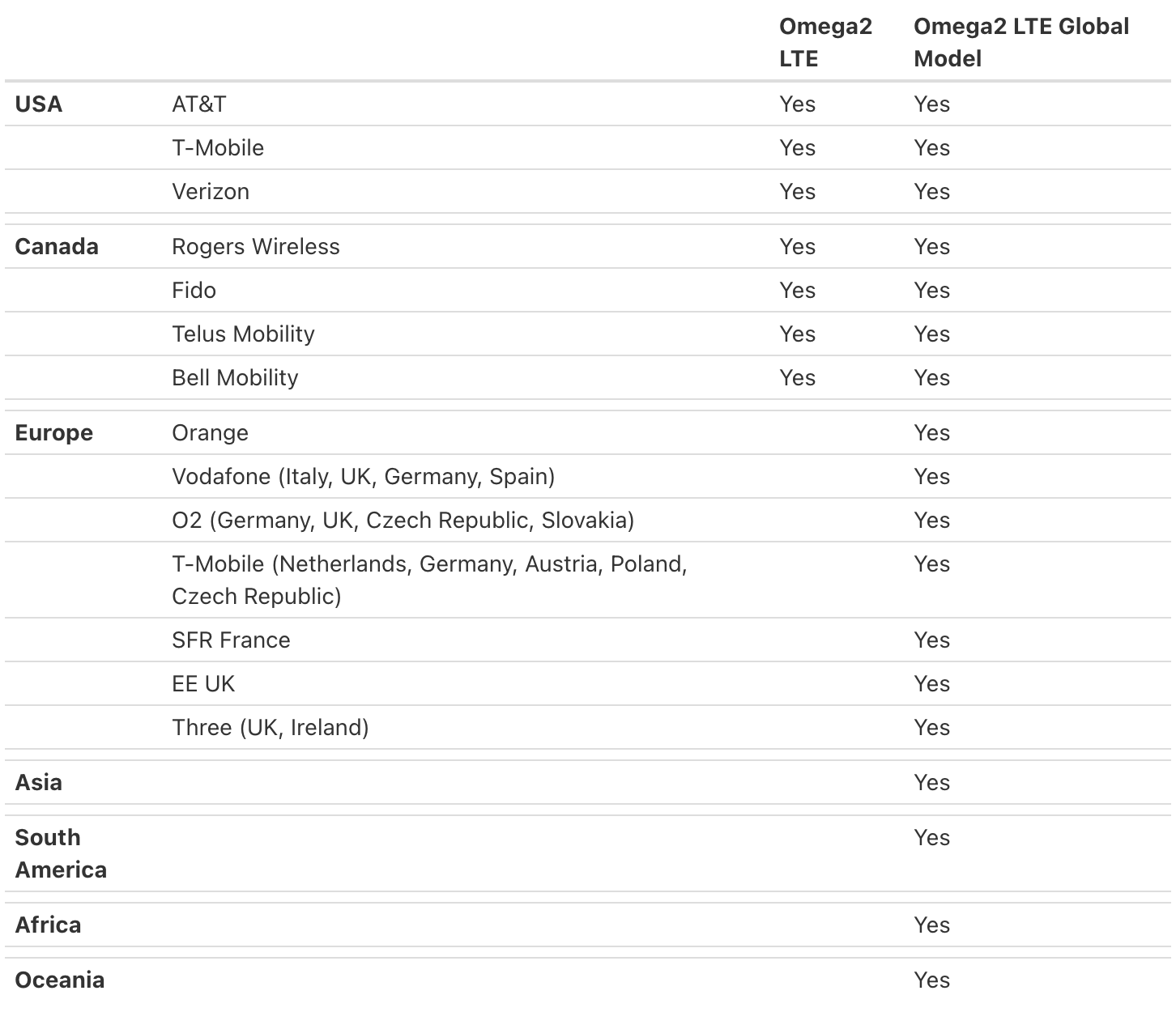
Specifications
Features & Specifications
| Processor | 580 MHz MIPS CPU |
| Memory | 128 MB RAM |
| Storage | 32 MB |
| Connectivity | 2.4 GHz b/g/n Wi-Fi, 4G LTE, GNSS |
| Operating System | OpenWrt 18.06 Linux |
| Wi-Fi Antenna | 2 dBi directional chip antenna & U.FL connector for external antenna |
| 4G LTE Antenna | U.FL connectors for main and diversity antennas |
| GNSS Antenna | U.FL connector for GNSS antenna |
| SIM Support | Nano-SIM slot for cellular data |
| Battery Support | LiPo battery management and JST-PH battery connector |
| Dimensions | 80 mm x 50 mm |
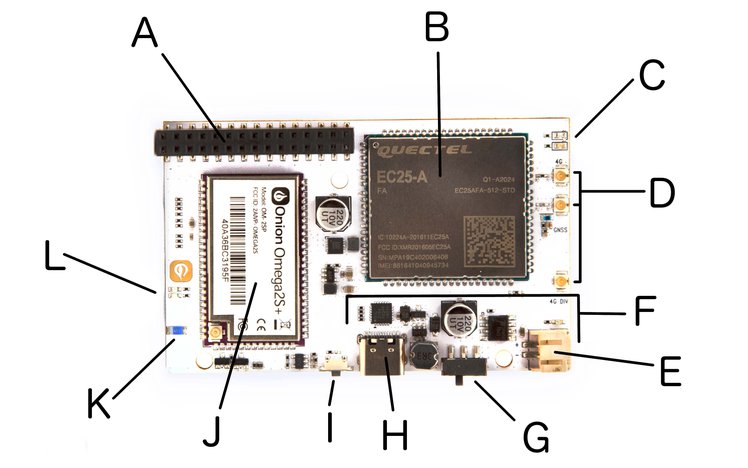
A. 30-pin expansion header
B. LTE modem + GPS receiver
C. LTE status LEDs
D. LTE & GNSS U.FL antenna connectors
E. JST-PH battery connector
F. Power management
G. Power switch
H. USB-C (power & serial)
I. Programmable button
J. Omega2S+ module
K. Wi-Fi chip antenna
L. Omega status LEDs
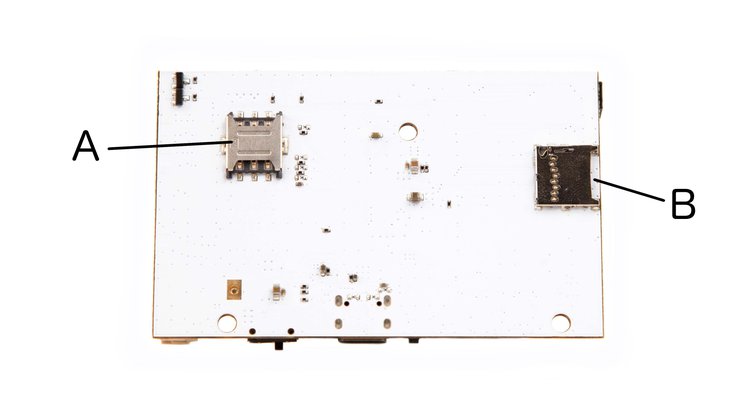
A. Nano-SIM slot
B. MicroSD slot
Documentation & resources
Frequently asked questions
Find a list of Onion distributors HERE
Fill out the form here and our sales team will get back to you with volume pricing info and more.
See our volume ordering page for all of the details.
